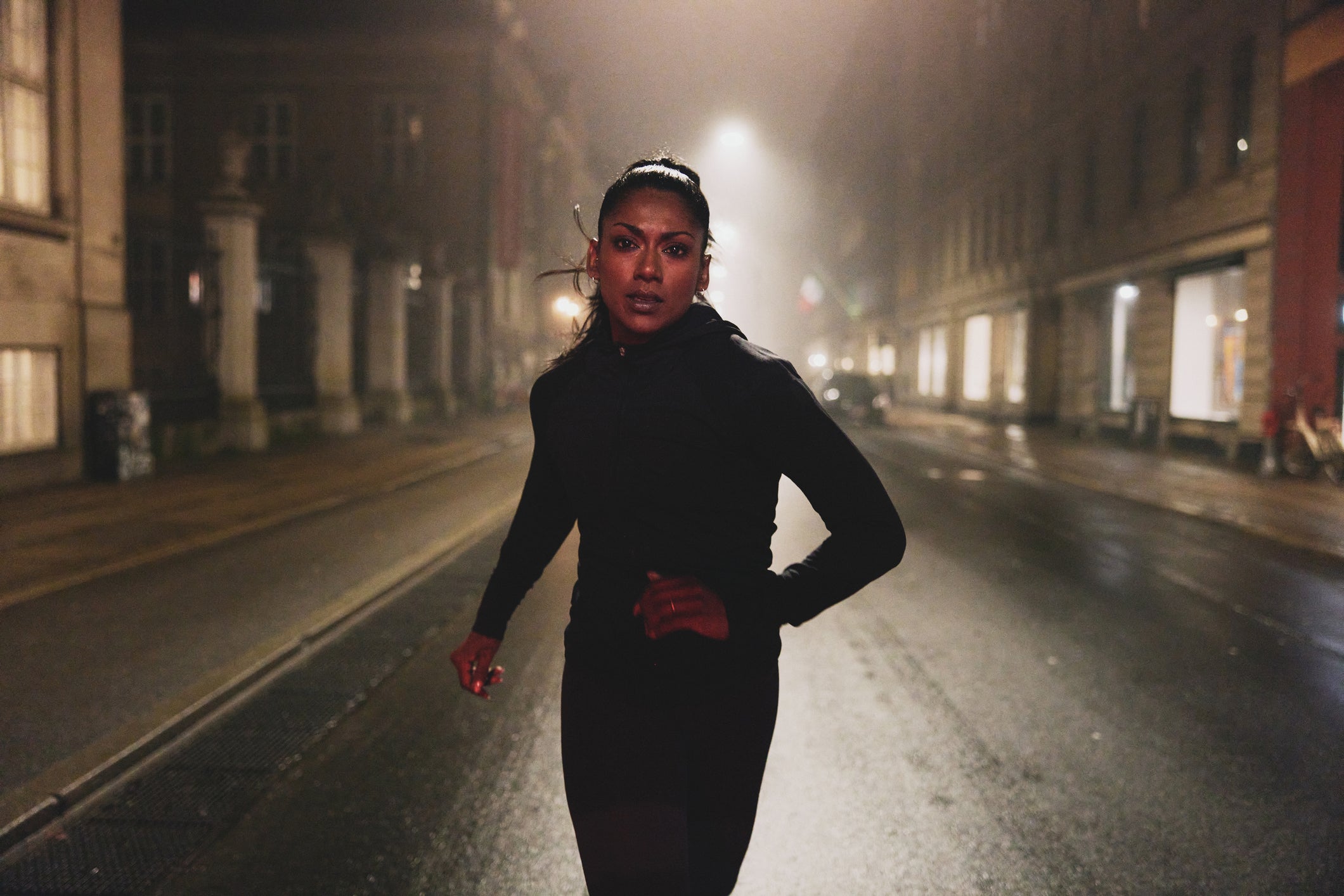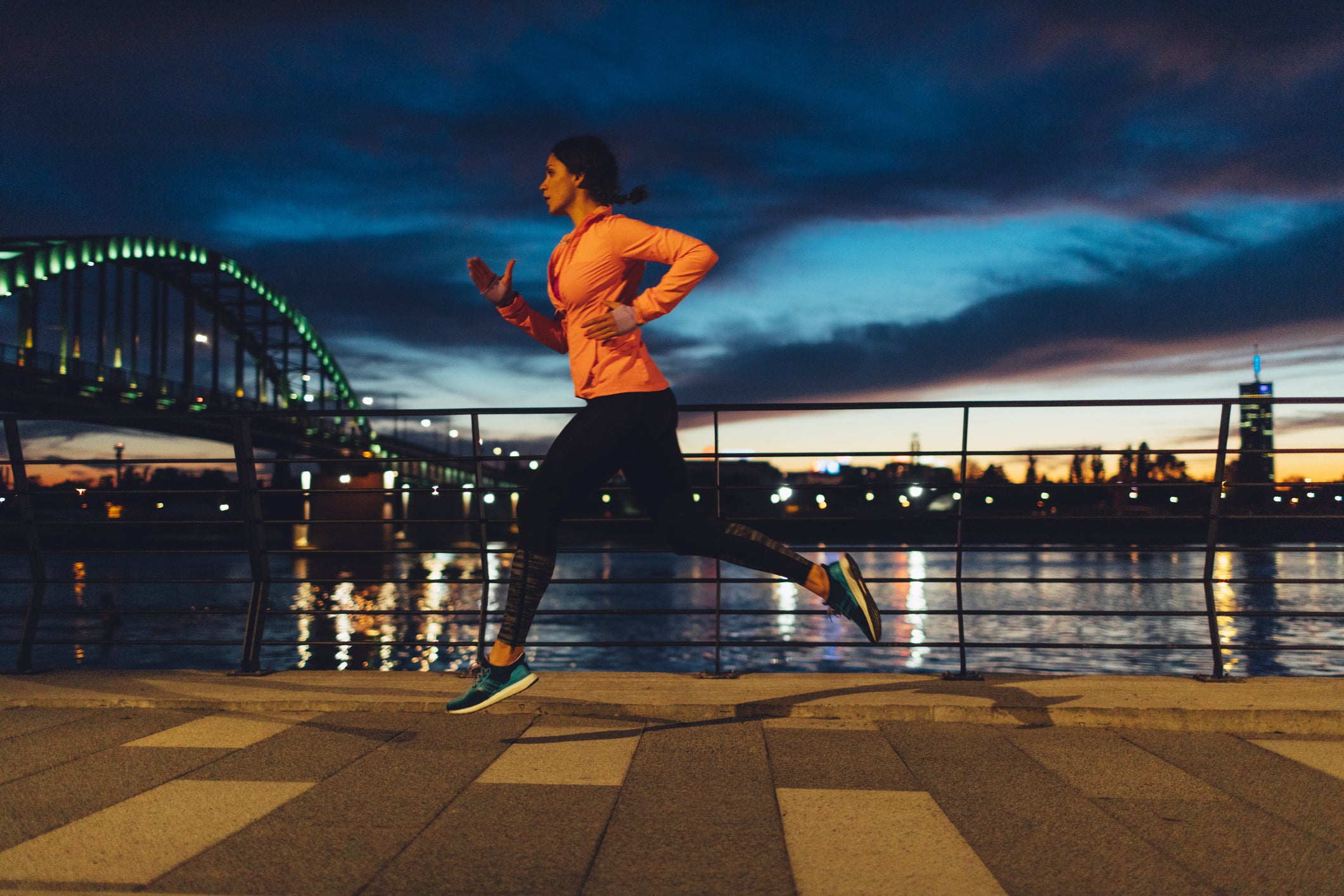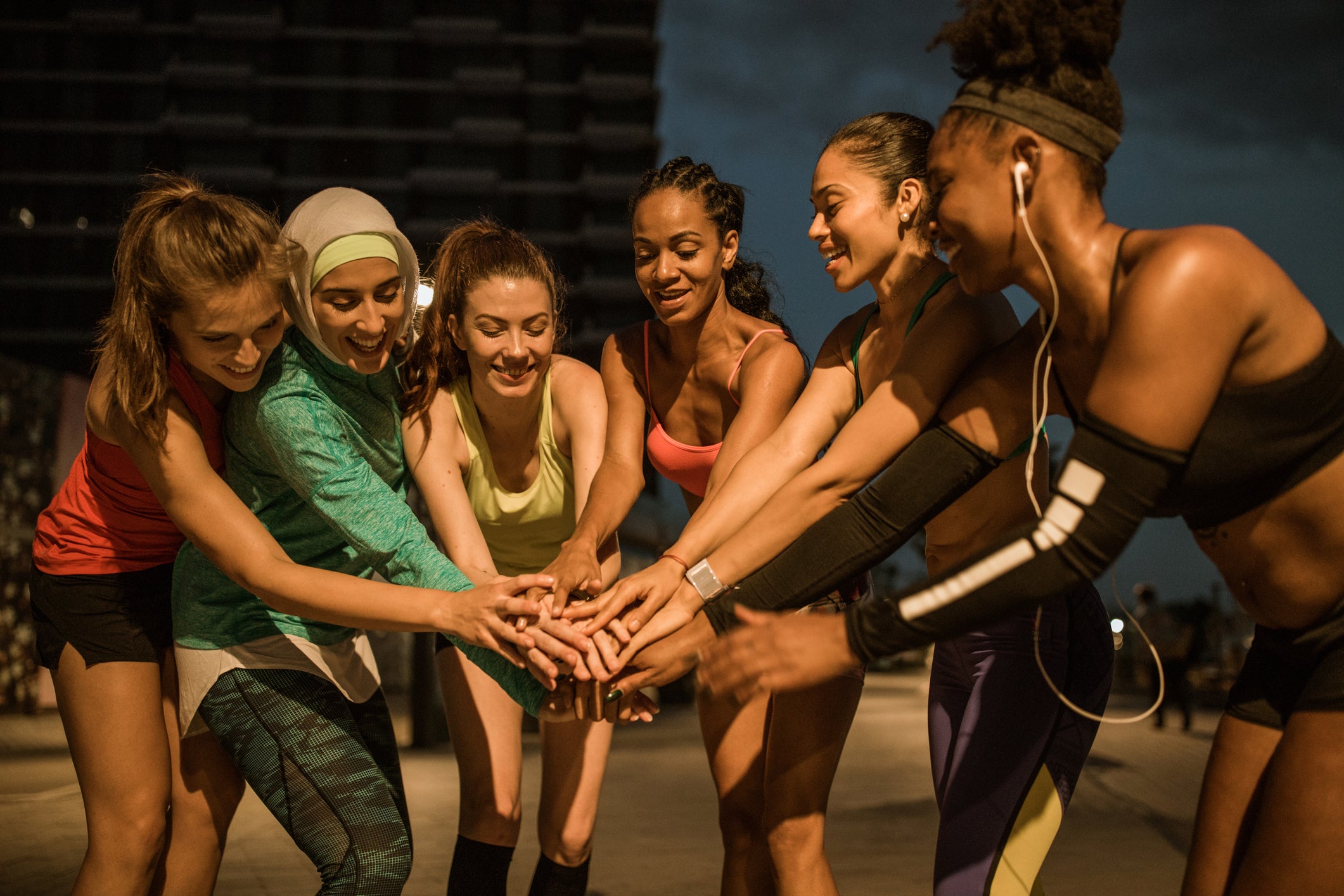The Independent's journalism is supported by our readers. When you purchase through links on our site, we may earn commission.
- Lifestyle
More than half of women feel unsafe running or exercising outside come nightfall, according to research – but there’s very little evidence to show that they’re more at risk than in the daytime. As the evenings lengthen, Helen Coffey argues that we shouldn’t let fear hold us back
 Friday 21 November 2025 06:00 GMTComments
Friday 21 November 2025 06:00 GMTComments open image in gallerySunset shouldn’t mean women stop exercising outdoors (Getty Images)
open image in gallerySunset shouldn’t mean women stop exercising outdoors (Getty Images)
Sign up for the Independent Women email for the latest news, opinion and features
Get the Independent Women email for free
Get the Independent Women email for free
 Email*SIGN UP
Email*SIGN UPI would like to be emailed about offers, events and updates from The Independent. Read our Privacy notice
Every year, when autumn gets underway and the evenings extend from late afternoon until, seemingly, forever, a trend starts to emerge. Articles and social media posts from women pop up declaring that they can no longer go running after work because it’s “not safe”. Every year, I completely understand the sentiment – and yet I also wonder whether that fear is based on statistical fact, rooted in actual risk. I wonder about perception versus reality.
I know that this is likely to be a “controversial” take – that I’ll be accused by some of intentionally endangering women by encouraging them to lace up their trainers and run straight into the arms of a predator. However, I also know that fear is increasingly stopping women from living a full and healthy life, so I wanted to take a closer look at what we’re really up against.
It’s certainly true that women feel less safe exercising after dark, as they do in general, as soon as the sun sets. An Office for National Statistics (ONS) survey in 2021 found that 81 per cent of women reported feeling very or fairly unsafe walking alone in a park after dark, compared with just 39 per cent of men. Almost three-quarters of women change their outdoor activity routines during winter, according to research by Sport England, while This Girl Can found that 60 per cent worry about the risk of sexual harassment or intimidation when exercising in the dark.
And women’s anxiety about running is far from unwarranted. Adidas’s international survey of 4,500 women aged 16 to 34 found that 30 per cent said they had experienced physical or verbal harassment while running. A separate online survey of 498 female runners by the University of Manchester revealed that a frankly shocking 68 per cent of respondents had experienced some kind of abusive behaviour. Verbal abuse accounted for 91 per cent of instances, while being followed constituted 29 per cent and 10 per cent involved being flashed. Twenty of the women surveyed had been assaulted while running, either physically or sexually.
In the vast majority of cases (95 per cent), women had not reported abusive behaviour to the police. That’s how normalised such incidents have become – and how little faith women have that the authorities will take action. It’s clearly a huge issue and a sky-high barrier to women staying active.
Nevertheless, there is very little, if any, available data to suggest that this type of harassment is more prevalent after dark. In fact, contrary to popular belief, you are no more likely to be a victim of crime at night than during the day in London, according to a report by the Greater London Authority. It challenges our natural assumptions and is completely at odds with the primal, innate fear of darkness that we all carry to some degree as human beings. But it’s true.
 open image in galleryWomen feel less safe running after dark, according to research (Getty Images)
open image in galleryWomen feel less safe running after dark, according to research (Getty Images)Various studies have tried and largely failed to ascertain a conclusive link between nighttime and greater crime levels. Results from one major piece of research in the US, for example, suggested a statistically significant uptick in robberies – but interestingly, this didn’t extend to any other kind of crime. A recent UK study from the University of Sheffield analysed 34,618 crimes that occurred from 2010 through 2019 in the South Yorkshire region. While crimes overall were more likely to occur after dark than during daylight hours, of the 14 types of crime looked at, only five were significantly more likely to occur after dark: burglary, criminal damage, personal robbery, bicycle theft and vehicle offences. Other offences, including sexual offences, were no more likely to have occurred.
It is natural, of course, that women feel wary, particularly given the steady rise in sexual assault and harassment, and in the wake of high-profile murders of women by men who were strangers: Ashling Murphy, Sabina Nessa, Zara Aleena, Bibaa Henry, Nicole Smallman, and Sarah Everard. The shadows of these tragedies loom long and heavy. But let’s not forget that daylight isn’t necessarily the saving grace we might presume it to be, either – Ashling was killed in broad daylight, dragged off the canal towpath in the middle of the afternoon.
Studies have tried and largely failed to ascertain a conclusive link between nighttime and greater crime levels
And then there’s the fact that these cases, though heinous and devastating, were so shocking because they were outliers. More than 90 per cent of rapes and sexual assaults are committed by someone the victim is familiar with – we’re talking friends, colleagues, clients, neighbours, family members, partners or exes. It’s not to say that we’re not at risk, just that we’re far, far more at risk from the men already in our lives. Another fact that seems to go against the grain – and one that has caused many of my friends to outright brand me a liar in the past – is that men are genuinely more at risk than women when it comes to “stranger danger”. According to the 2024 Crime Survey for England and Wales, men were twice as likely as women to have been victims of violence at the hands of someone they didn’t know.
I worry that “concern” for women’s safety, unimpeachable as it may seem, often translates into a means of controlling our behaviour and making our worlds smaller. It’s the well-meaning cousin of the victim-blaming mentality that points the finger at women when they are assaulted. We’re all too familiar with the accusatory lens that asks, “what was she wearing?” “Had she been drinking?” “Did she walk home alone?” And, yes, “was she running after dark?”. As women, we know these questions aren’t relevant or pertinent. They are a smokescreen, designed to forever shift the spotlight onto our actions, rather than those of the perpetrator.
 open image in galleryWomen’s running club membership has soared by 89 per cent (Getty Images)
open image in galleryWomen’s running club membership has soared by 89 per cent (Getty Images)There are some positive initiatives in terms of encouraging women to stay active regardless of the time of day. Sport England and This Girl Can teamed up to launch “Let’s Lift the Curfew”. Now in its third year, the campaign showcases women’s stories and concerns around exercising outdoors in the darker months, inviting them to share their outdoor routines on Strava and organise group exercise activities in their area. Light the Night hosts group night-time runs for women so they can feel safe cantering along canal paths and in city parks; Reclaim the Night, a movement that first started in 1970s Leeds, is still active today, with marches and events held across the UK. Female membership of running clubs surged by a massive 89 per cent in 2023, according to Strava’s 2024 Year in Sport report, and participation has been further aided by a rise in inclusive and female-only clubs.
This is all heartening stuff; anything that gets us out and moving is to be applauded. But we also shouldn’t have to join groups or sign up for special events or change our routes and routines. The real risk is, statistically, much lower than the perceived risk when it comes to running as the nights draw in. The greater danger is that women, already less likely to meet physical activity guidelines than men, feel forced to neglect their fitness in autumn and winter, impacting their mental and physical health for a full six months of the year.
“Feel the fear and do it anyway” might feel like a hackneyed self-help cliché – but it just might be advice worth listening to.
More about
womenRunningExerciseexercisingJoin our commenting forum
Join thought-provoking conversations, follow other Independent readers and see their replies
Comments


